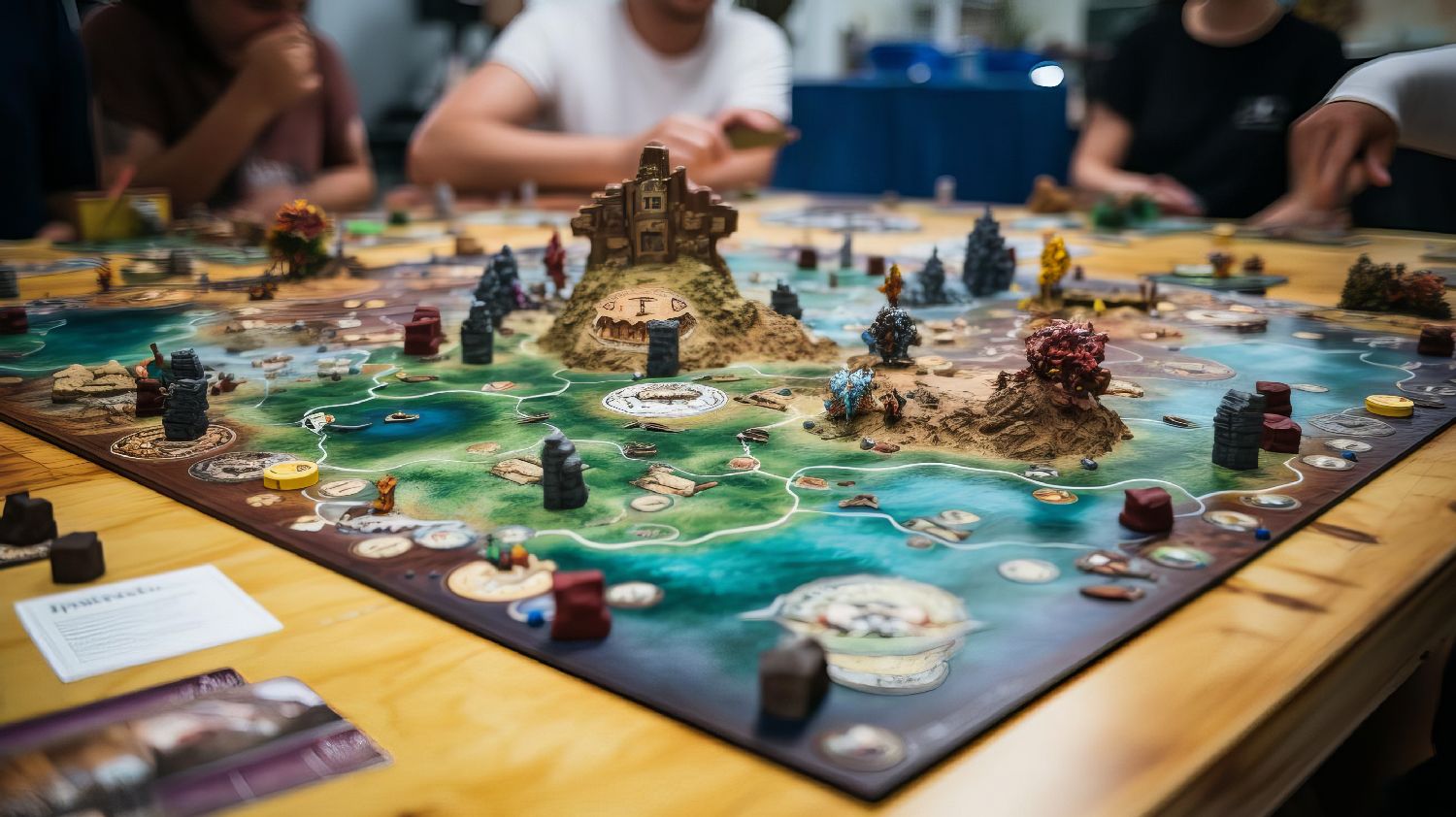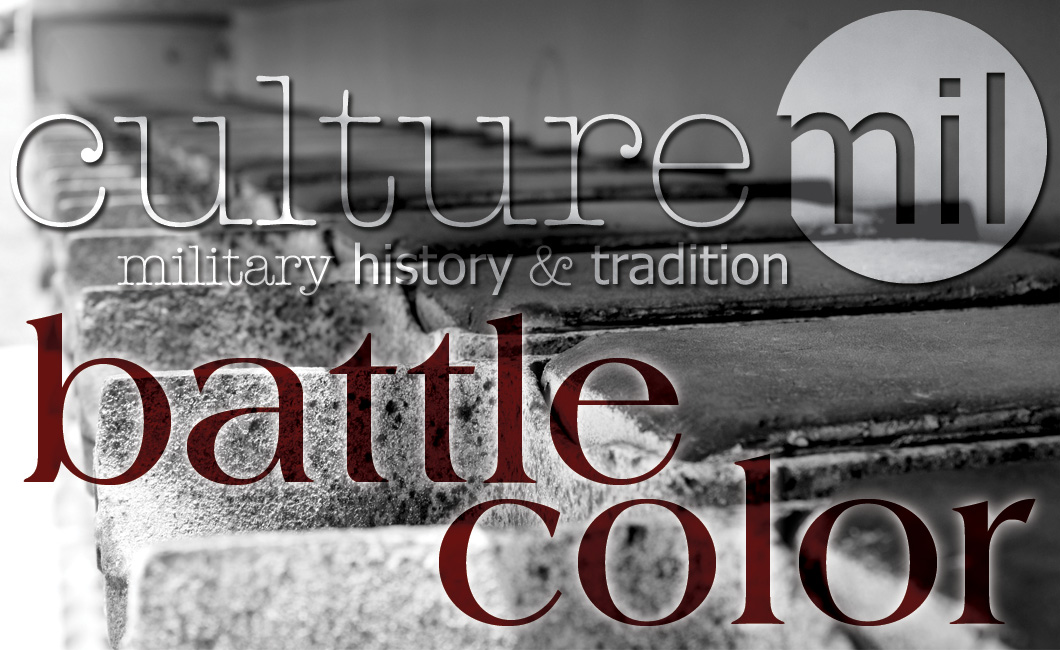- Presidential Unit Citation (Navy) Streamer with six silver and three bronze stars
- Presidential Unit Citation (Army) Streamer with one silver oak leaf cluster
- Joint Meritorious Unit Award Streamer
- Navy Unit Commendation Streamer
- Valorous Unit Award (Army) Streamer
- Meritorious Unit Commendation (Navy-Marine Corps) Streamer
- Meritorious Unit Commendation (Army) Streamer
- Revolutionary War Streamer
- Quasi-War with France Streamer
- Barbary Wars Streamer
- War of 1812 Streamer
- African Slave Trade Streamer
- Operations Against West Indian Pirates Streamer
- Indian Wars Streamer
- Mexican War Streamer
- Civil War Streamer
- Marine Corps Expeditionary Streamer with twelve silver stars, four bronze stars and one silver “W”
- Spanish Campaign Streamer
- Philippine Campaign Streamer
- China Relief Expedition Streamer
- Cuban Pacification Streamer
- Nicaraguan Campaign Streamer
- Mexican Service Streamer
- Haitian Campaign Streamer with one bronze star
- Dominican Campaign Streamer
- World War I Victory Streamer with one silver and one bronze star, one Maltese Cross, and Siberia and West Indies clasps
- Army of Occupation of Germany Streamer
- Second Nicaraguan Campaign Streamer
- Yangtze Service Streamer
- China Service Streamer with one bronze star
- American Defense Service Streamer with one bronze star
- American Campaign Streamer
- European-African-Middle Eastern Campaign Streamer with one silver and four bronze stars
- Asiatic-Pacific Campaign Streamer with eight silver and two bronze stars
- World War II Victory Streamer
- Navy Occupation Service Streamer with Europe and Asia Clasps
- National Defense Service Streamer with two bronze stars
- Korean Service Streamer with two silver stars
- Armed Forces Expeditionary Streamer with five silver stars
- Vietnam Service Streamer with three silver and two bronze stars
- Southwest Asia Service Streamer with three bronze stars
- Kosovo Campaign Streamer with two bronze stars
- Afghanistan Campaign Streamer
- Iraq Campaign Streamer
- Global War on Terrorism Expeditionary Streamer
- Global War on Terrorism Service Streamer
- Philippine Defense Streamer with one bronze star
- Philippine Liberation Streamer with two bronze stars
- Philippine Independence Streamer
- French Croix De Guerre Streamer with two palms and one gilt star
- Philippine Presidential Unit Citation Streamer with two bronze stars
- Korean Presidential Unit Citation Streamer
- Republic of Vietnam Armed Forces Meritorious Unit Citation of the Gallantry Cross with Palm
- Republic of Vietnam Meritorious Unit Citation Civil Actions Streamer with Palm
- usmcmuseum.org/battle_color_marine_corps.pdf
- drumcorps.marines.mil/Portals/174/Docs/Press%20Information/%20BCDPROGRAM13.PDF
- barracks.marines.mil/Units/BattleColorDetachment.aspx
Written by Jenifer Chrisman on November 2, 2015.
Gold and scarlet became the official colors of the U.S. Marine Corps on April 18, 1925, by Marine Corps Order Number 4. However, it was not until January 18, 1939, that the colors were incorporated when a new standard was approved after a two-year study concerning both design and which units the flag should be issued to.
The official Battle Colors resides in the Marine Barracks, Washington, D.C. They bear the 54 authorized streamers, which represent U.S. and foreign unit awards, along with periods of service, campaigns and expeditions in which the marines have participated from the Revolutionary War through today. A duplicate of the colors reside in the Pentagon in the office of the Commandant of the Marine Corps.
Prior to their official designation, the Marines carried a variety of flags over their previous years or service. Little is known about which flags were carried during their earliest years, however, it is believed the Grand Union flag, and possibly the Rattlesnake flag, were carried ashore by Captain Samuel Nicholas’ battalion during the expedition of New Providence Island on March 3, 1776.
During the 1830s and 40s the flag was a white field with gold fringe bearing an anchor and eagle in the center with the legend “To the Shores of Tripoli” across the top. After the Mexican War the legend was revised to “From Tripoli to the Halls of Montezuma.” A flag similar to the national flag with a union containing an eagle perched on a shield of the United Stated above a half wreath encircled by 29 stars with a field of red and white strips also was carried during the Mexican and Civil Wars.
The flag switched again at the beginning of 1876. It bore the national colors of the Stars and Stripes with “U.S. Marine Corps” embroidered on the middle red strip, in yellow. In 1914, at the landing of Vera Cruz, the flag was a blue field with a laurel wreath encircling the Marine Corps emblem in the center with inscribed scarlet ribbons above (“U.S. Marine Corps”) and below (“Semper Fidelis”). Beginning April 2, 1921, it was directed all national colors be manufactured without the yellow fringe or “U.S. Marine Corps” embroidered on the red stripe and they were officially retired on March 14, 1922.
Briefly following World War I, battle honors were inscribed directly on the colors of a unit. This was quickly recognized as impractical due to limited space and the multiplicity of honors. In 1936 a Marine Corps Board recommended using the Army system of attaching streamers of the organization colors to the staff. Marine Corps Order No. 157 authorized this practice on November 3, 1939, which is still in use.
Today, the Battle Color Detachment, featuring the Silent Drill Platoon, the Color Guard and “The Commandant’s Own” The United States Marine Drum & Bugle Corps, celebrate the history and pride of the Marines with the Battle Color Ceremony. The 130-person Battle Color Detachment performs at military installations throughout the U.S., along with special events around the world, every year to demonstrate the professionalism, discipline and “Esprit de Corps” of the United States Marines.
The Silent Drill Platoon is a 24-person rifle unit who perform military drill and rifle inspection without verbal command. The Color Guard are entrusted with the National Ensign, carried by the Color Sergeant (who is considered the senior sergeant in the Marine Corps), and the official Battle Color. “The Commandant’s Own” The United States Marine Drum & Bugle Corps was formed to augment “The President’s Own” in November 1934. Traditional Buglers perform daily bugle calls at Marine Barracks, Washington, D.C., and standard “honors” for the fallen at Arlington National Cemetery, as well as perform as part of the Battle Color Detachment.
The Battle Color says it all… Marines. The Few. The Proud.
Current Award, Campaign, Service and Expeditionary Streamer Entitlement, to the Battle Colors of the Marine Corps
Sources:



